
Aster novaeangliae 'September Ruby' Buy Online at Annie's Annuals
Other scientific names: Aster novae-angliae, Aster roseus, Lasallea novae-angliae, Virgulus novae-angliae. French names: Aster de la Nouvelle-Angleterre. Family: Composite Family (Asteraceae) Group: Asters. Distinctive features: Large rose-purple flowers, with very numerous rays. Clasping leaves. Rough stem. Leaves smell a bit spicy when crushed.

Aster novaeangliae 'Crimson Beauty' Farmyard Nurseries
Nesom is an uncommon American-aster hybrid known from CT, MA, RI, VT. It is normally found growing with both parental species and is intermediate in morphology between them. The involucral bracts do not taper into the long apex found in S. novae-angliae, are sparsely stipitate - glandular, and lack a spine tip (with a spine tip in S. ericoides ).

Aster novaeangliae 'Pink Parfait' Farmyard Nurseries
Aster novae-angliae (New England Aster) One of the tallest and most spectacular of the Asters, Aster novae-angliae (New England Aster) is a robust, upright perennial boasting a profusion of showy daisy-like flowers, 1.5 in. wide (4 cm), with rose-purple rays surrounding sunny yellow centers. Blooming for weeks from late summer until frost, the.
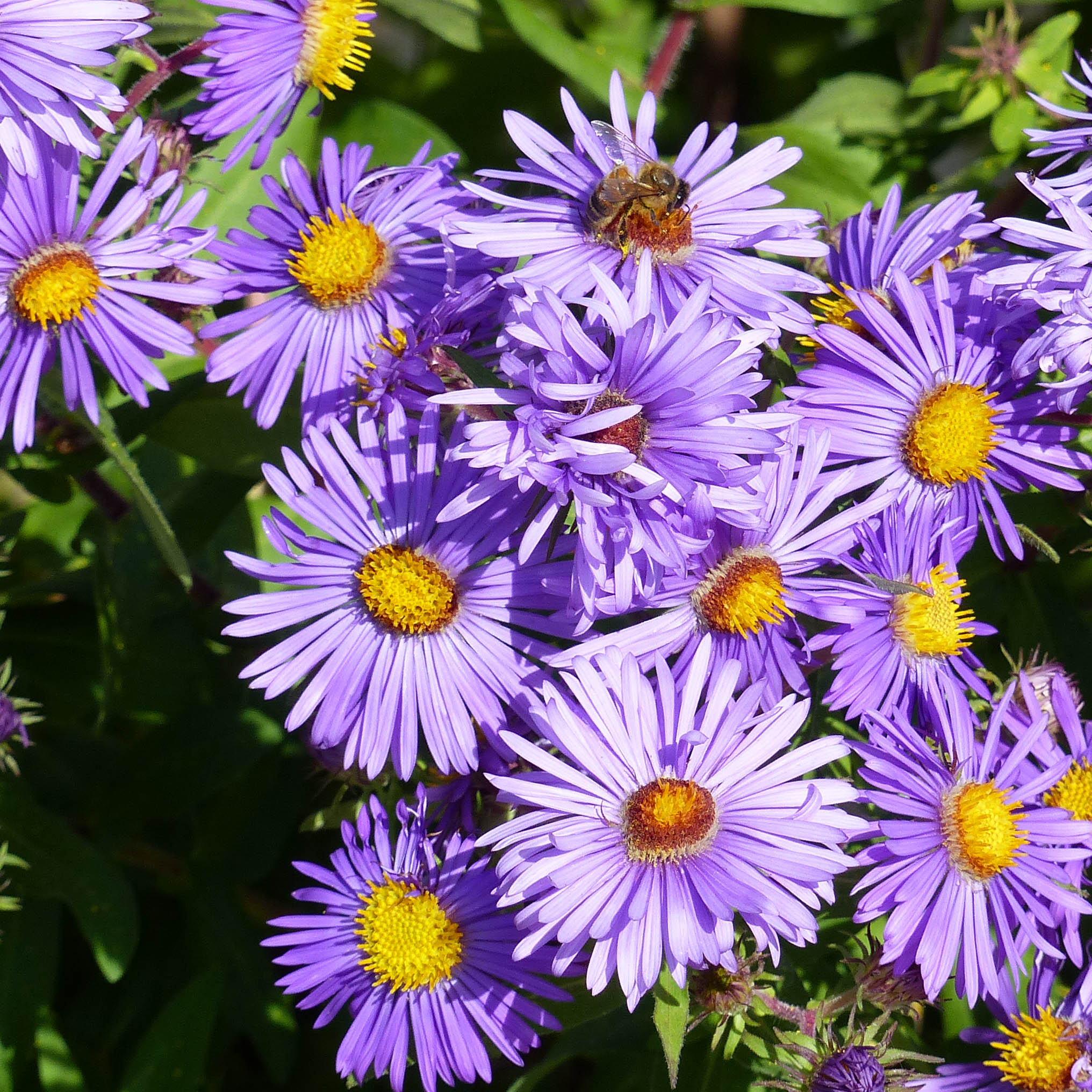
Aster novaeangliae Barr's Blue Grand Aster d'automne bleu violet
Symphyotrichum Nees - aster P: Species: Symphyotrichum novae-angliae (L.) G.L. Nesom - New England aster P: Symphyotrichum novae-angliae (L.) G.L. Nesom New England aster. Images. Click on the carousel image to display a larger version (if available). Image Usage Requirements and Citations

Aster novaeangliae 'Violetta' Farmyard Nurseries
Symphyotrichum. Asteraceae (Aster) part shade, sun; moist fields, along roads, edges of woods. Pick an image for a larger view. See the. Branching clusters of stalked flowers at the top of the stem and arising from upper leaf axils. Branches are often leafy and crowded with flowers. Flowers are 1 to 1½ inches across with 40 to 100 narrow.
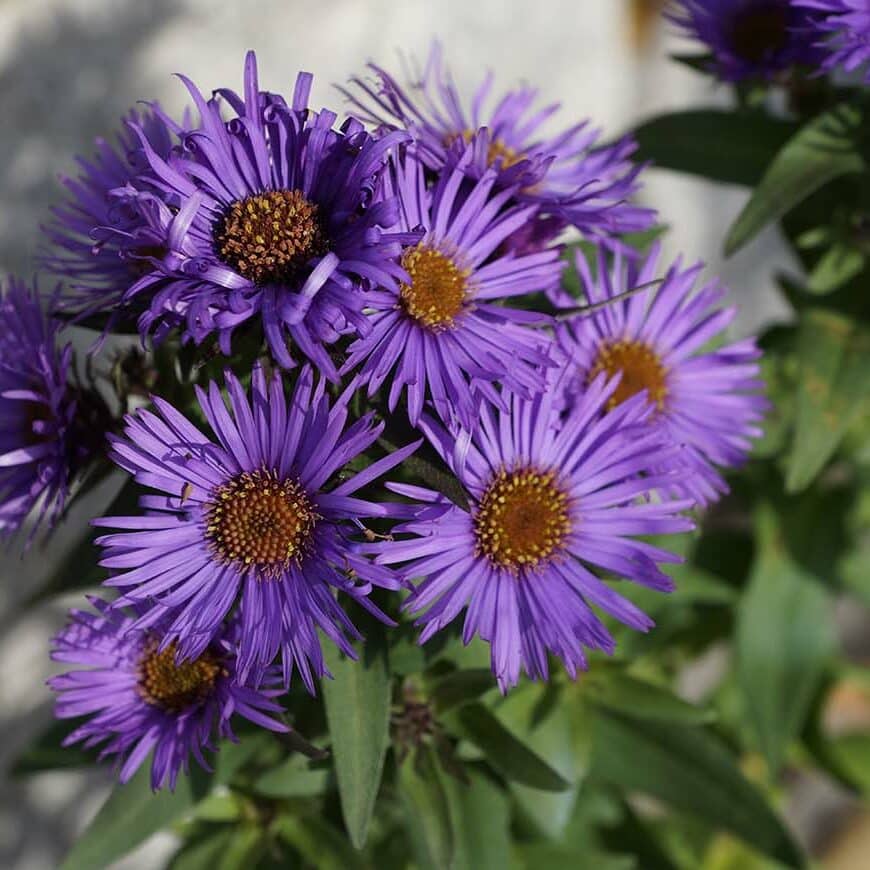
Eulenhof Staudengärtnerei Aster novaeangliae `Purple Dome`
Symphyotrichum novae-angliae. New England aster, Symphyotrichum novae-angliae, is a perennial member of the Asteraceae family that includes chrysanthemums and daisies.. S. novae-angliae does best in organically rich, well-draining soil, like its natural habitat in the wild, but also tolerates clay very well. The pH should be acidic, in the 5.

Aster novaeangliae 'Purple Dome' Raublattaster Standort sonnig, Blütenfarbe purpurrot
The New England aster (Symphyotrichum novae-angliae) is a standout fall flower. The plants feature erect stems that can grow several feet tall. The stems have fine hairs, or bristles with many lance-shaped leaves. In the late summer to early fall, the profuse daisy-like blooms appear. The flowers are typically 1.5-inch in diameter in a pinkish.
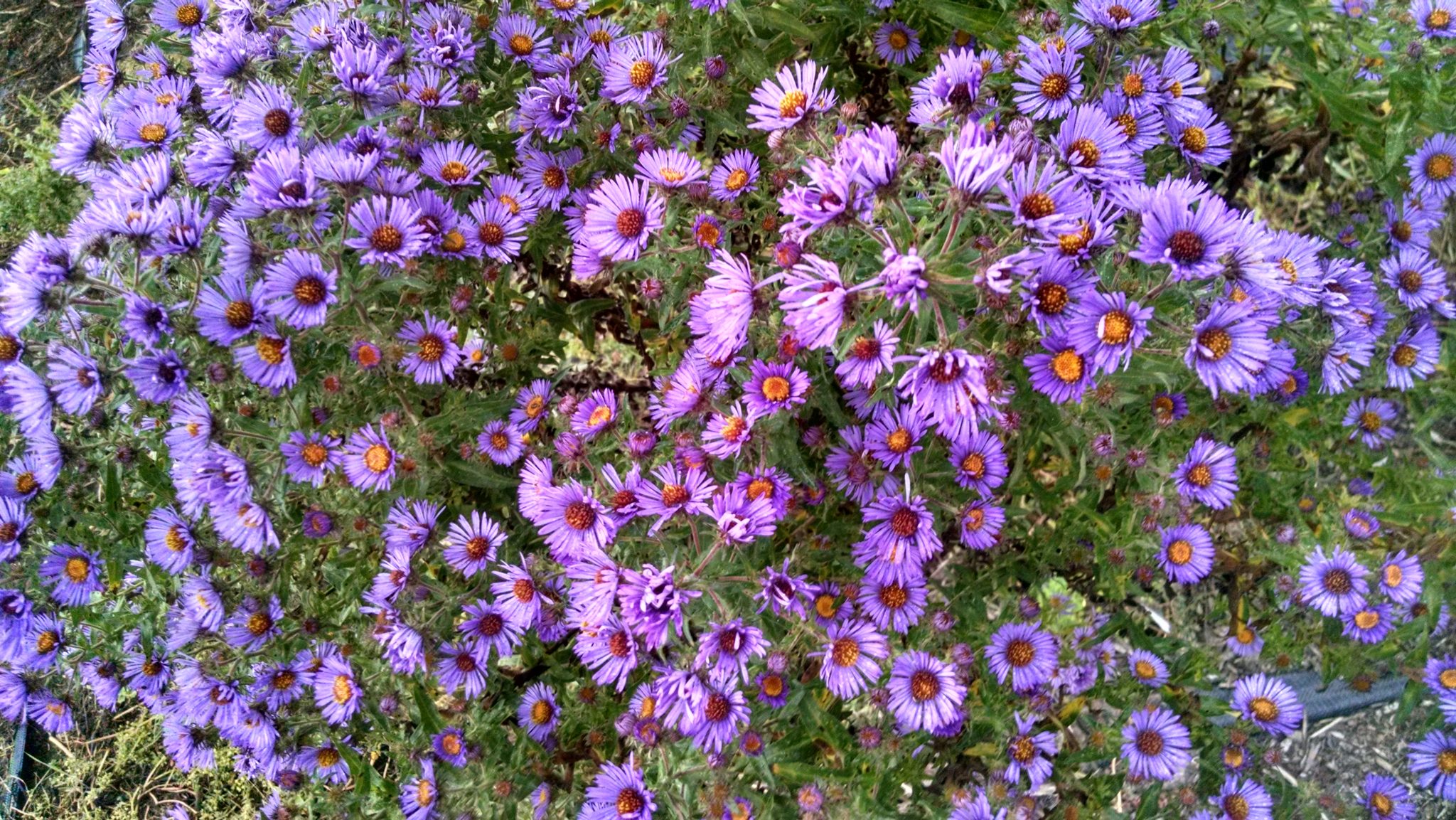
Aster novaeangliae New England Aster (per oz) Michigan Wildflower Farm
Noteworthy Characteristics. Symphyotrichum novae-angliae, commonly called New England aster, is a Missouri native perennial which occurs in moist prairies, meadows, thickets, low valleys and stream banks (Steyermark) throughout the State.It is a stout, leafy plant typically growing 3-6' tall with a robust, upright habit. Features a profuse bloom of daisy-like asters (to 1.5" diameter) with.

Aster novaeangliae Violetta Grand Aster d’automne à fleurs violettes
Présentation. L'aster de Nouvelle-Angleterre est le plus coloré et le plus florifère des asters d'Amérique du Nord. C'est aussi le dernier à demeurer en fleur à l'automne. Il existerait une vingtaine d'espèces d'asters au Québec. Avec ce nombre, on peut comprendre que les différencier peut devenir un vrai casse-tête.

Aster novaeangliae 'Septemberrubin', GartenRaublattAster 'Septemberrubin'
Aster novae-angliae, commonly known as New England Aster, belongs to the Asteraceae family, including yarrows, chrysanthemums, and sunflowers. The Genus Aster contains over 600 species and thousands of hybrid varieties, providing a wide choice to pick from, as they all vary in habit, height, flower color, leaf shape, and growing conditions..

Aster novaeangliae landscape architect's pages
Symphyotrichum novae-angliae (formerly Aster novae-angliae) is a species of flowering plant in the aster family native to central and eastern North America. Commonly known as New England aster , [4] hairy Michaelmas-daisy , [5] or Michaelmas daisy , [6] it is a perennial , herbaceous plant usually between 30 and 120 centimeters (1 and 4 feet) tall and 60 to 90 cm (2 to 3 ft) wide.
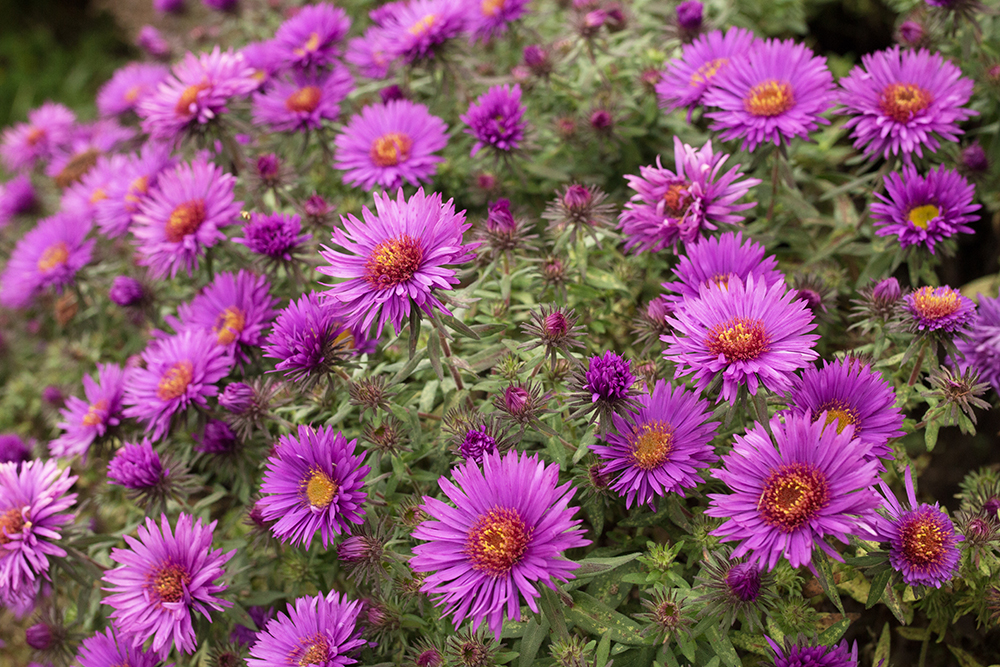
Aster novaeangliae 'Purple Dome' Stonehouse Nursery
Aster novae-angliae. Magnificent in bloom, New England Aster lights up the late season landscape with bunches of deep violet to lavender-pink flowers. Large and showy, this aster can grow up to six feet high. Like most asters it.. More Detail. Plants 3" Pots Sold Out. Seeds 70,000 seeds/oz. 1/4 Oz $16.00. 1/2 Oz $24.00.

Symphyotrichum novaeangliae / New England Aster Wild Ridge Plants
Common Name: New England aster Genus: Aster Species: novae-angliae Cultivar: 'Andenken an Alma Potschke' Skill Level: Beginner Exposure: Full sun Hardiness: Hardy Soil type: Well-drained/light.

ASTER NOVAEANGLIAE 'PURPLE DOME' Horlings Plants
PLANT DESCRIPTION: Aster novae-angliae is a sturdy clump forming perennial with stiff hairy stems. Leaves are lance shaped, pubescent and up to 4" long. Each leaf clasps the stem and contains two protruding basal lobes. Large flower heads are arranged in showy panicles. The heads consist of a ring of 40 or more royal purple or pinky-purple.

NEW ENGLAND ASTER (Symphyotrichum novaeangliae). Photographed September 21 2017 at Raccoon
Zones are based on the average annual extreme minimum temperature an area is expected to receive during the winter. They are used to determine whether a plant is likely to be perennial in your area. If the number in the green box below is within the zone range listed for the plant, it will be hardy for you and thrive in your climate. 3. 4. 5. 6.
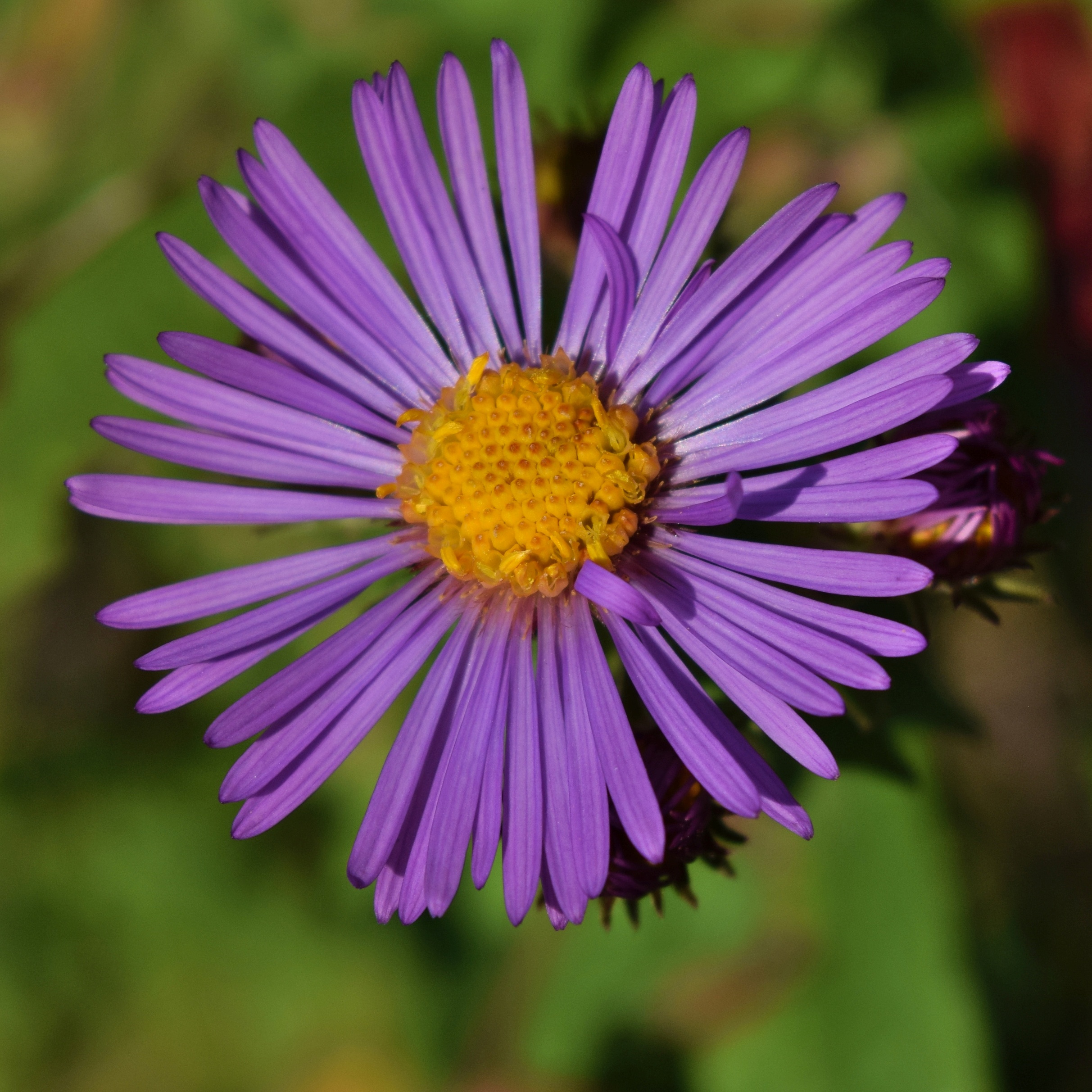
Aster novaeangliae Multiplants
The New England Aster, scientifically known as Aster novae-angliae, is a striking and important native North American plant with many benefits for your garden and local ecosystem. Native: The plant is native to most of the central and northeastern United States and southeastern Canada, from Manitoba south to Louisiana and east to Maine.